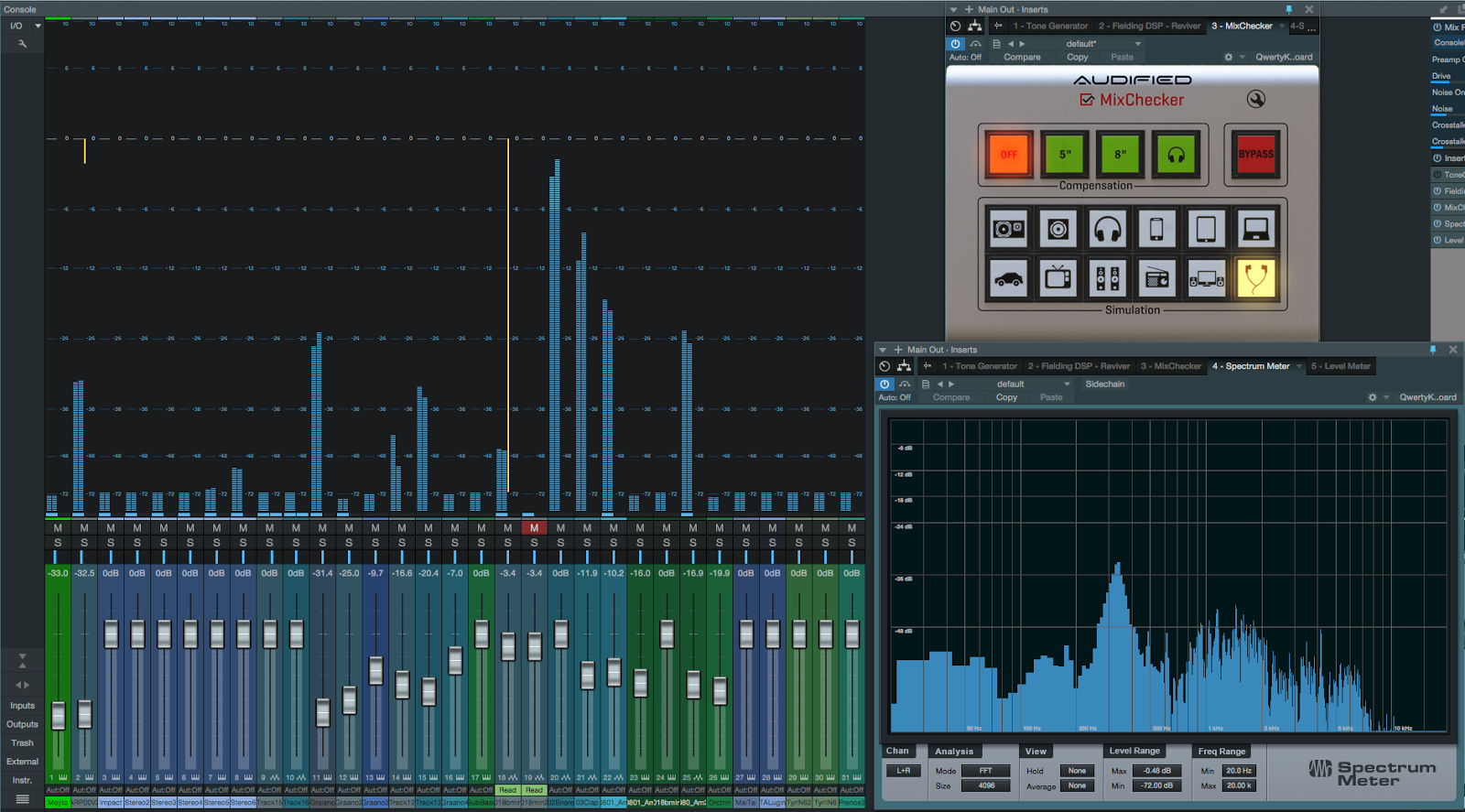

Have you ever tried slightly distorting the whole master (or a bus grouping the bass with something else), in order to hear the effect of the bass modulating the higher frequencies ? It has limits too, obviously, but it's always worth trying.

That is one reason (among a few others) why mix vocals and percussions in or near the center. So, the wider your mix, the more perturbed the balance will be when switching from mono to stereo or the other way around (unless it's so wide there's nothing in the center ). This means whatever is in the center will get a +3dB rise when downmixing to mono, compared to what's in the sides or very wide. When you add signals electrically (or digitally), their correlation is perfect, which gives you a +6dB gain. When wavefronts from both speakers combine in the air, they are not well correlated, wich gives you +3dB compared to if only one speaker was working. This is true, but it's a little bit more complicated. But that's still only part of making mixes translate well. No long term experience with sonarworks myself but had a demo from them before, and it was definitely great for ironing out the frequency response part.
#MIXCHECKER ALTERNATIVE HOW TO#
Knowing that can also help you decide how to mix. Looks like dt770 did have a bit of a bass bump and a dip around 4-5 kHz. It's the only way to overcome the human psychology biases of judging your own mixes

I feel it's been easier to get mixes to translate from speakers to headphones rather than from headphones to speakers. And on top of that, combined with the "in your head" stereo image (as opposed to "in front of you" phantom center on speakers), it really gives you a different sense of space than speakers. This human hearing compression effect also totally screws with the perception of reverb decays. the natural compression effect of human hearing really kicks into high gear with headphones, and its harder to sense loudness differences - this is a great thing for hearing details, but it makes it hard to know if you got the right levels - you might not know when one thing is to loud compared to another because you can hear them both just fine with headphones.


 0 kommentar(er)
0 kommentar(er)
